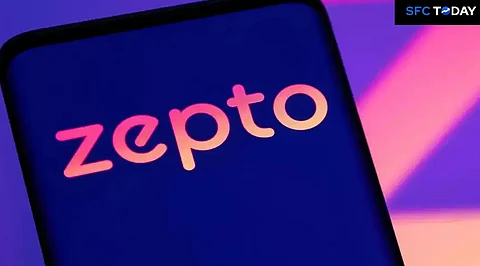

Zepto, India’s fast-growing quick-commerce startup, has reached a major milestone by crossing ₹11,110 crore in revenue in FY25. This marks a 149% jump from the previous year’s ₹4,454 crore, highlighting the company’s rapid rise in the competitive world of 10-minute deliveries. After achieving this remarkable growth, the company is now at a turning point, facing the challenge of moving from a high-growth startup to a profitable and sustainable business.
This article explores Zepto’s current position, recent developments, competition, and the road ahead for the company.
In just a few years, Zepto has grown from a small idea into a national name in quick commerce. Its revenue has multiplied every year:
FY23: ₹2,024 crore
FY24: ₹4,454 crore
FY25: ₹11,110 crore
The company has grown over 2.5 times in just one year, reflecting a strong demand for ultra-fast delivery services. Zepto’s gross order value is now close to $4 billion annually, showing how widely its services are being used.
The growth is not only about sales. The company has also been improving its unit economics—how much money it makes or loses on each order. Many of Zepto’s dark stores (local micro-warehouses used to deliver orders) are now close to breaking even, meaning they are covering their costs. This is a major step toward profitability in an industry where heavy discounts and high delivery costs often lead to losses.
Zepto’s strong revenue growth is supported by bold strategic moves. Several recent developments show how the company is preparing for its next stage:
Zepto is getting ready for a public listing, likely in 2026. To do this, the company has taken steps like:
Moving its parent company registration from Singapore to India to comply with Indian IPO regulations.
Planning to increase Indian ownership to over 50%, as Indian stock market rules require a certain level of domestic shareholding.
Attracting new investments to strengthen its balance sheet before going public. A fresh funding round of $450500 million is expected, which could push its valuation to $67 billion.
Going public will not only give Zepto more funds for expansion but also increase its credibility in the market.
While grocery delivery remains its core business, Zepto has started expanding into new services. One of the key steps is Zepto Atom, a subscription-based consumer analytics platform. This service uses Zepto’s data to help brands understand customer preferences and buying behavior.
By turning its massive data into a separate business line, Zepto can generate additional revenue without heavy delivery costs.
Zepto is focusing on Tier2 and Tier3 cities to capture the next wave of growth. Smaller cities are starting to adopt online grocery services quickly, and reaching them early can secure loyal customers.
At the same time, the company is optimizing its operations. For example, Zepto Café, the 10-minute food delivery service, is being scaled down after facing supply and staffing challenges. This reflects a shift toward focusing on areas with the best profitability potential rather than chasing every market segment.
India’s quick commerce sector has become a fierce battleground. Zepto currently holds around 26% market share, behind Blinkit (41%) and slightly below Swiggy Instamart (27%).
Despite being younger than its rivals, Zepto’s rapid growth has made it a strong challenger. Its dark store network and focus on ultra-fast delivery helped it carve out a distinct brand image. However, holding this position will require continuous innovation and efficiency, especially as competitors aggressively expand into new product categories like electronics, beauty, and ready-to-eat meals.
While the growth story is impressive, Zepto faces several challenges on its road to long-term success:
Profitability Pressure: Quick commerce is an expensive business. High delivery costs, intense competition, and frequent discounts can lead to significant losses. Zepto needs to control expenses and push more stores toward profitability before its IPO.
Competition from Established Players: Blinkit (backed by Zomato) and Swiggy Instamart have deep financial resources and strong customer loyalty. Any slowdown in Zepto’s growth could allow rivals to regain market share quickly.
Regulatory and Compliance Risks: The quick commerce model attracts scrutiny for employee welfare, pricing practices, and food safety standards. Any regulatory action could disrupt operations or increase costs.
Capital Discipline: Startups going public in India have faced post-IPO challenges when investors question high valuations without clear profitability. Zepto must show that its growth can be sustainable and efficient to win long-term investor trust.
Zepto’s path forward will likely focus on five major areas:
Achieving Profitability: The top priority is to achieve EBITDA break-even and eventually positive cash flow. This means every order and every dark store should start generating net earnings.
Public Listing in 2026: Once profitability improves and Indian ownership crosses 50%, Zepto is expected to launch its IPO. The listing will provide capital for expansion and give early investors an exit opportunity.
Expansion into New Cities and Categories: Moving into smaller cities and adding new product categories such as electronics, beauty products, and general merchandise could unlock new revenue streams and reduce dependency on grocery alone.
Data Monetization: Platforms like Zepto Atom can generate recurring revenue by selling insights to brands. This is a high-margin business that does not require heavy investment in logistics.
Operational Efficiency: Closing or optimizing underperforming verticals like Zepto Café, improving supply chain, and using technology to reduce delivery times and costs will help strengthen the business foundation.
Zepto’s ₹11,110 crore revenue year marks the beginning of a new chapter. From a high-growth startup, the company is transitioning toward a sustainable, publicly listed enterprise. The next two years will be crucial as it focuses on profitability, IPO readiness, market expansion, and business diversification.
If Zepto succeeds in balancing growth and efficiency, it could become India’s most successful quick-commerce story, challenging industry giants and redefining how urban India shops.